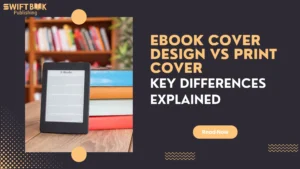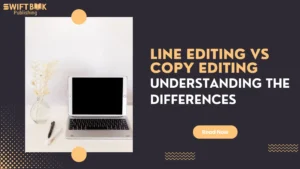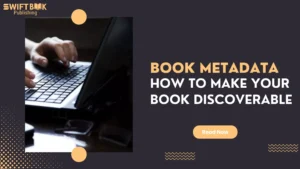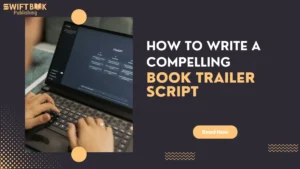You could write the next big thing in fiction, or non-fiction for that matter, but if no one can find your book, it doesn’t matter how brilliant it is. That’s where book metadata comes in.
Metadata is the behind-the-scenes info that tells search engines, online retailers, and distributors what your book is about, who it’s for, and where it belongs. Done well, it gets your book in front of the right readers. Done poorly, it buries it under a pile of better-tagged titles.
So if you’re publishing your own work, or just want to understand how it all works, especially in the debate of self-publishing vs traditional publishing, this is your starting point.
What Exactly Is Book Metadata?
In simple terms, book metadata is the set of information that describes your book for catalogues, retailers, and search engines. It includes details like:
- Title and subtitle
- Author name
- Description or blurb
- Keywords
- BISAC subject codes (the categories your book belongs to)
- ISBN and barcodes for books
- Pricing and distribution info
Whether you’re setting up your title on Swift, IngramSpark, or Apple Books, the system will use this metadata to determine where and how to display your book. It’s also used by libraries, bookstores, and distributors to list and shelve your title.
Why Metadata Is a Big Deal
Imagine someone searches for “cosy witch fiction with a cat familiar” or “parenting guides for single dads”, your metadata (specifically your keywords and categories) decides whether your book shows up or not.
And this isn’t just for digital. Even in print, retailers use BISAC codes and keywords to help staff categorise titles properly. Get this wrong, and your dark comedy thriller might end up misfiled as romantic suspense.
That’s why publishers, and smart authors, don’t leave metadata to chance. It’s not just a techy afterthought. It’s marketing.
Core Components of Metadata (and How to Optimise Them)
ISBN and Barcodes
Each version of your book, paperback, hardback, eBook, or audio, needs its own ISBN. These numbers are how retailers track and verify your book. A missing or incorrect ISBN can block your book from being distributed properly, especially in more traditional outlets.
If you’re producing multiple book formats for genres (like print and audio), make sure you use unique ISBNs and upload the correct cover and file for each.
Keywords
These are the search terms that help readers find your book. Platforms like Swift allow up to seven backend keywords. Use them wisely.
What works:
- Genre + tone (“gritty crime thriller,” “clean sweet romance”)
- Audience or age group (“middle grade adventure,” “retirement financial planning”)
- Specific themes or settings (“small town murder mystery,” “London travel guide”)
What doesn’t work:
- Repeating the title or author name
- Single words with no context
- Categories already covered by BISAC codes
Keywords can also help promote multimedia like your book trailer script or audiobook narration styles, especially if you want to boost discoverability across formats.
BISAC Codes
BISAC (Book Industry Standards and Communications) codes help distributors and retailers categorise your book correctly. You can usually choose up to three, so choose wisely.
Don’t just go for general ones like “Fiction / General.” Be as specific as possible. If your book blends genres (say, historical romance with a mystery subplot), pick codes that reflect both.
Swift Book Publishing and other services familiar with distribution networks often help with this step. They understand the nuances of coding and how to avoid metadata conflicts.
Advanced Tips for Better Metadata
Think Like a Reader
What would your ideal reader type into a search bar to find a book like yours? That’s the mindset you need for writing your book description and choosing keywords. If you’ve done author bio writing or book influencer marketing, apply the same principle, use plain language, address the reader directly, and highlight what makes your story different.
Maintain Consistency Across Platforms
The info you use on Swift should match what’s on Barnes & Noble, Kobo, and everywhere else. If you’re working with an aggregator or service provider, check that they’re not tweaking your descriptions in ways that break branding.
Update as You Go
Metadata isn’t set in stone. Once your book has been out for a while, revisit your keywords and categories. Maybe you’re getting unexpected traction from fantasy readers, lean into it. Or maybe a new trend makes your niche suddenly popular.
This kind of adjustment is especially helpful when you’re repurposing book content into blog posts, reels, or lead magnets.
How Metadata Works in Different Formats
Each format has its own metadata requirements.
- eBook: Needs digital ISBN, correct file format, keywords, and cover design suited to screen browsing.
- Print: Requires print ISBN, ebook cover design vs print cover versions, and barcode placement.
- Audio: Should include narrator info, runtime, and audio-friendly categories to highlight audiobook narration styles.
Metadata also affects how your book is indexed in databases, which is critical for authors going through self-publishing vs traditional publishing. Indie authors must handle this themselves, while traditional publishers typically have a team for it.
Who Can Help with Metadata?
You don’t have to go it alone.
Publishing teams like Swift Book Publishing handle metadata setup as part of their editing, formatting, and distribution support. If you’re already working with a book editor, check if they or someone on their team provides metadata assistance.
You can also find metadata pros through book marketing services who understand things like Swift SEO, keyword competition, and how BISAC choices influence visibility.
Metadata for Special Cases
- Non-Fiction: Extra care with fact-checking nonfiction books and accurate keywords is vital.
- Children’s Books: Your metadata needs to match reading level, age range, and illustrator credits (especially if you collaborate with children’s book illustrators).
- Series: Include series title and volume number in your metadata to avoid confusion.
- Audiobooks: Narrator details and audio specs should be clear, especially if voice talent is a selling point.
Conclusion
You’ve already poured your heart into writing and refining your book. Don’t let it vanish into the void because no one can find it. Optimising your book metadata is one of the most valuable things you can do to boost discoverability, improve search rankings, and increase sales.
Take it seriously. Get it right. And revisit it often.
If you’re planning a wider release or want help navigating Swift, IngramSpark, and beyond, Swift’s distribution experts can make sure your metadata hits the mark, so your book lands where it needs to: in readers’ hands.
Still building your launch strategy? Take a look at our piece on book influencer marketing, because great metadata deserves great promotion.







